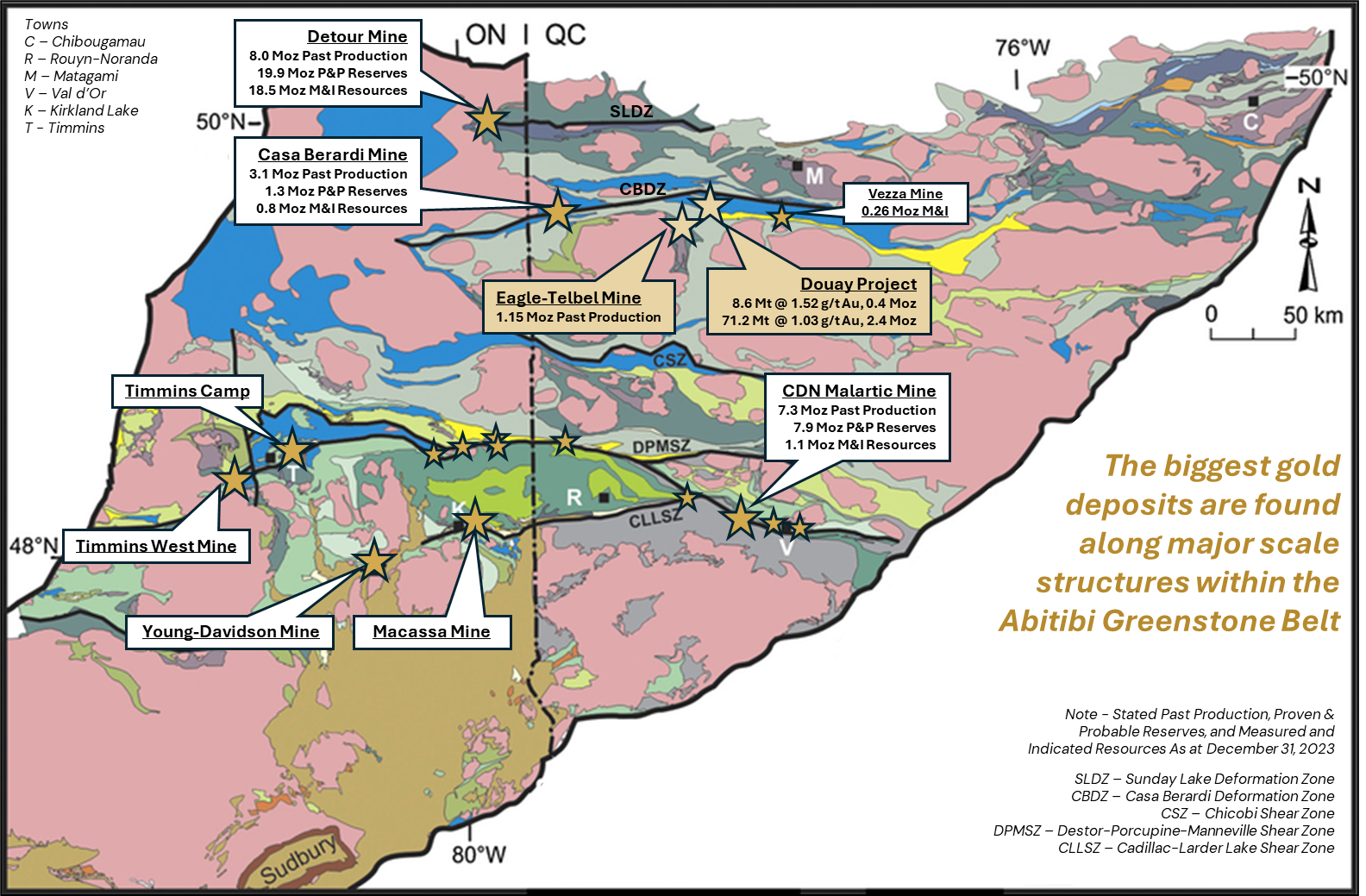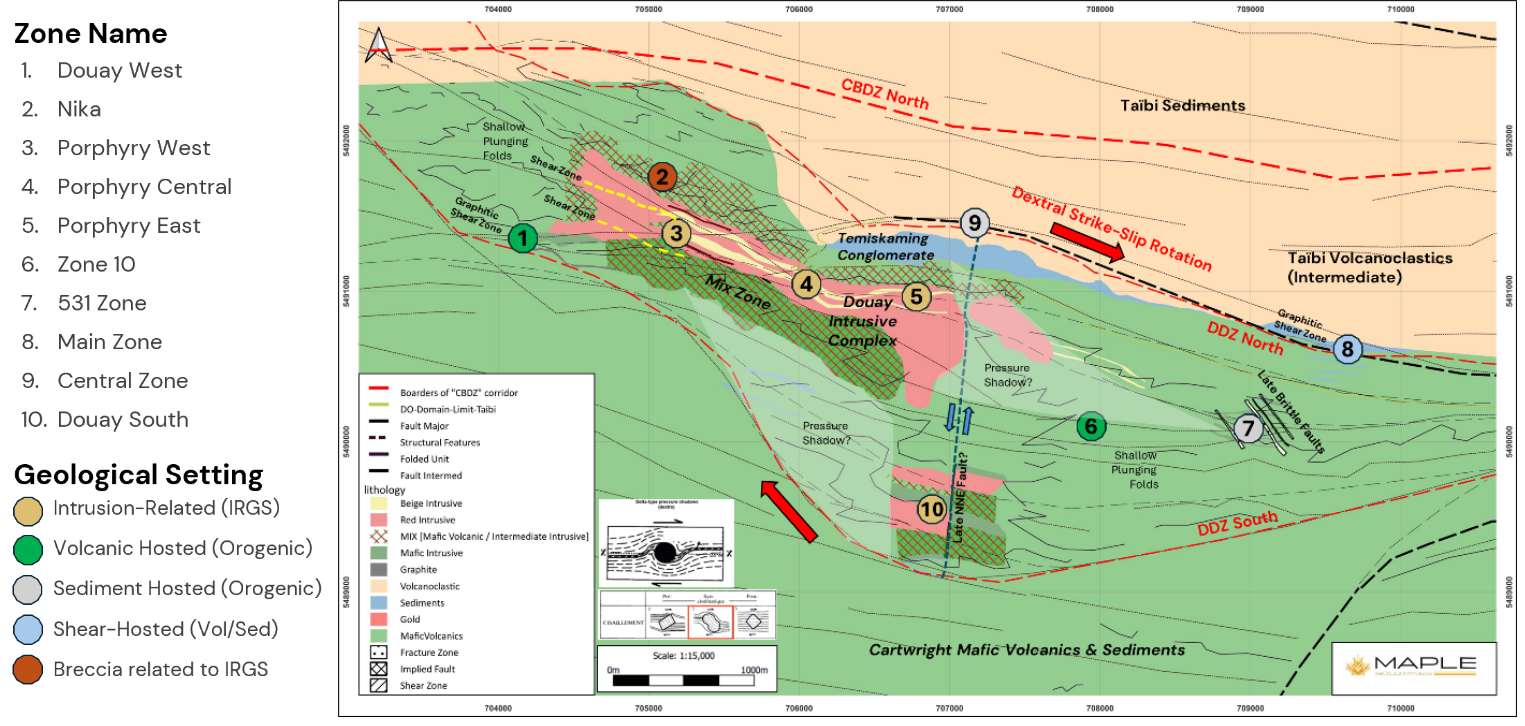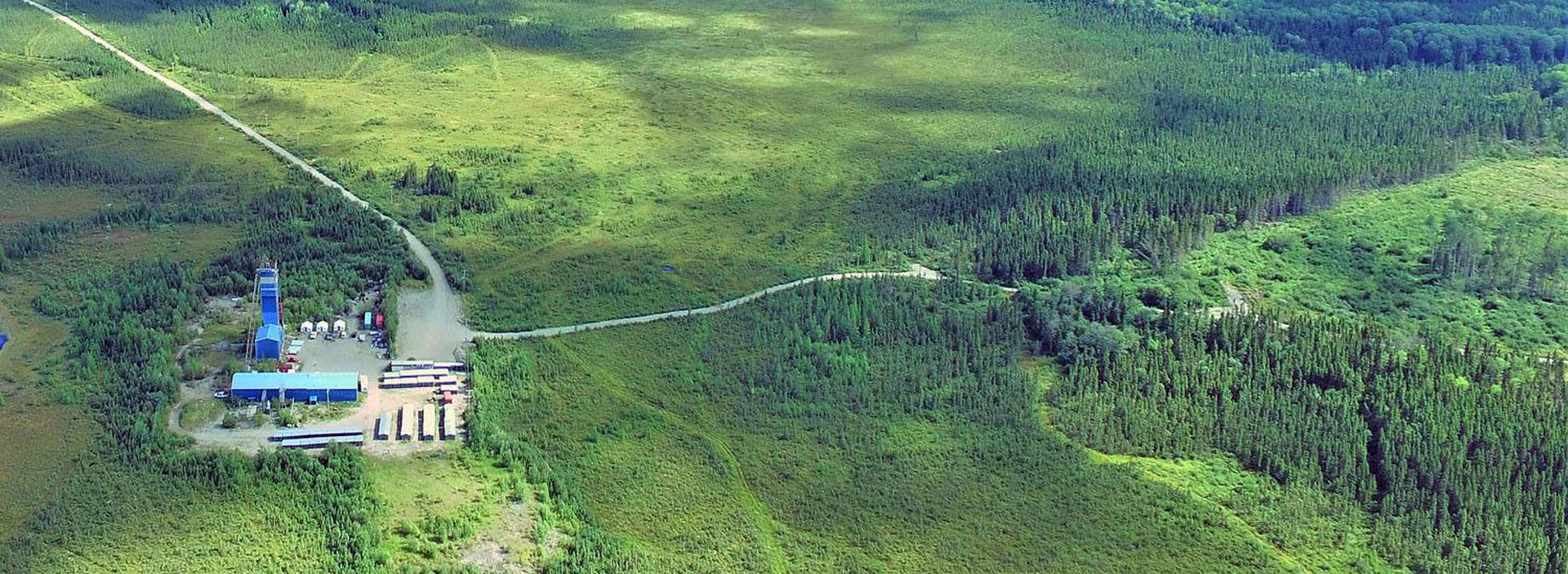The Douay deposit is situated within the northern Abitibi Greenstone Belt, a world-class Archean gold district. Gold mineralization at Douay is primarily hosted in a bimodal volcanic and intrusive sequence, dominated by syenitic intrusions and basaltic flows, crosscut by major deformation structures associated with the Casa Berardi Deformation Zone.

Figure 3: General Geology of the Abitibi Subprovince in Quebec with the location of Douay Gold Project, Casa Berardi Deformation Zone (CBDZ), and producing gold mines and camps.
- Nika Zone: Syenite-hosted, broad, high-grade intercepts at depth; site of the 2025 step-out success (2.05 g/t Au over 108.6 m).
- Porphyry Zones (West, Central, East): Structurally-controlled, lower-grade, high-tonnage gold system comprising over 55% of current contained ounces.
- Central & NW Zones: Emerging areas of interest with higher-grade intersections and limited historical drilling.
- Taibi Target Area: Recently staked claims covering Taibi Group sedimentary rocks and banded iron formations north of the Douay resource area, representing a promising new exploration front along the projected northwest extension of the Douay Deformation Zone.

Figure 4: General Geology of Douay Gold Project showing outline of Douay Deformation Zone with potential strike-slip rotation generating pressure shadows around the Douay alkaline intrusive complex. Main mineralized zones are highlighted by geological setting.
Mineralization remains open laterally and at depth across all major zones, with particular emphasis now on bulk-tonnage underground targets beneath and beyond the current pit shells.Mineralization occurs as broad zones of disseminated and fracture-controlled gold within variably fenite-altered syenite, hydrothermal breccias, and intercalated volcanic rocks. Alteration assemblages include K-feldspar, amphibole, magnetite, quartz-carbonate, and chlorite, with 5–15% disseminated pyrite locally associated with elevated gold grades.
Nika Zone: Syenite-hosted, broad, high-grade intercepts at depth; site of the 2025 step-out success (2.05 g/t Au over 108.6 m).
Porphyry Zones (West, Central, East): Structurally-controlled, lower-grade, high-tonnage gold system comprising over 55% of current contained ounces.
Central & NW Zones: Emerging areas of interest with higher-grade intersections and limited historical drilling.

